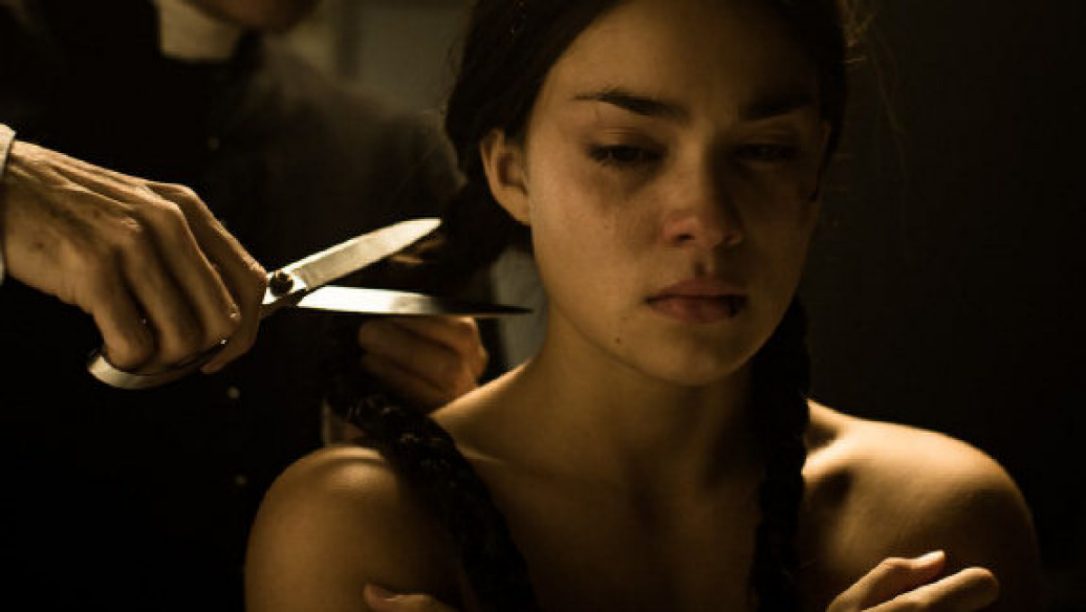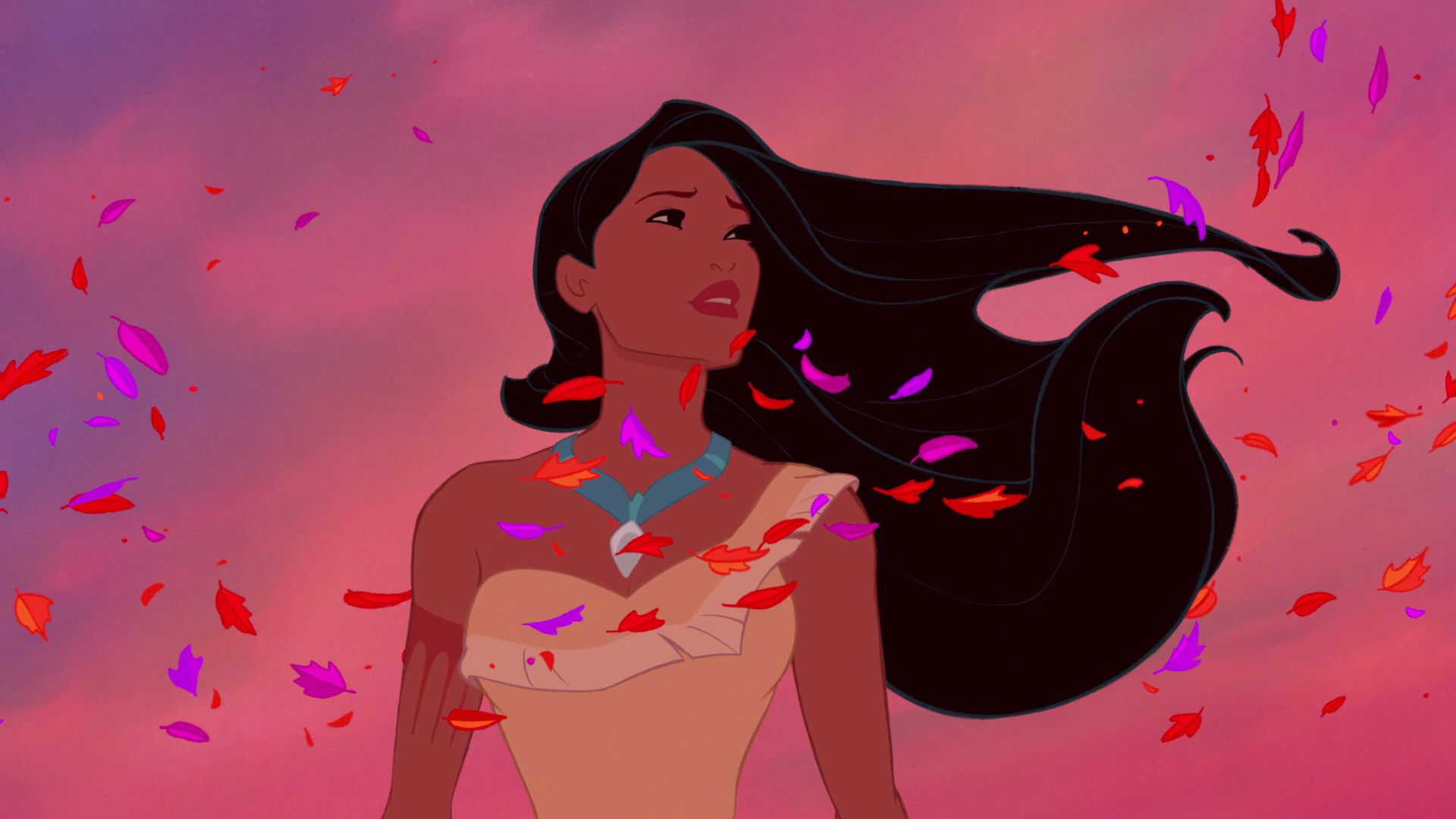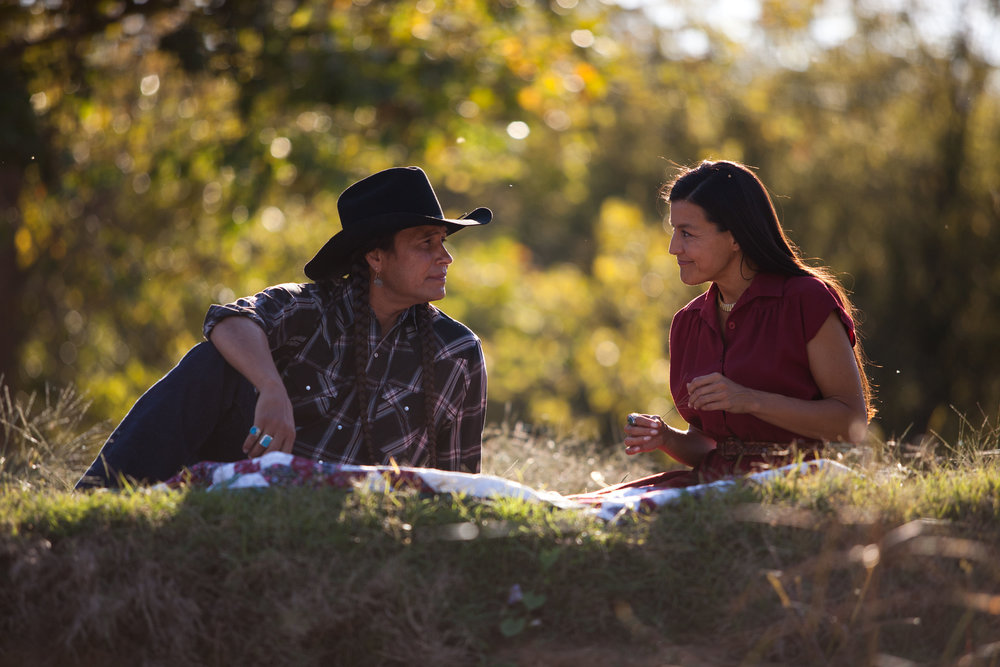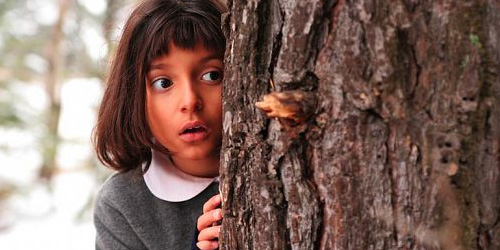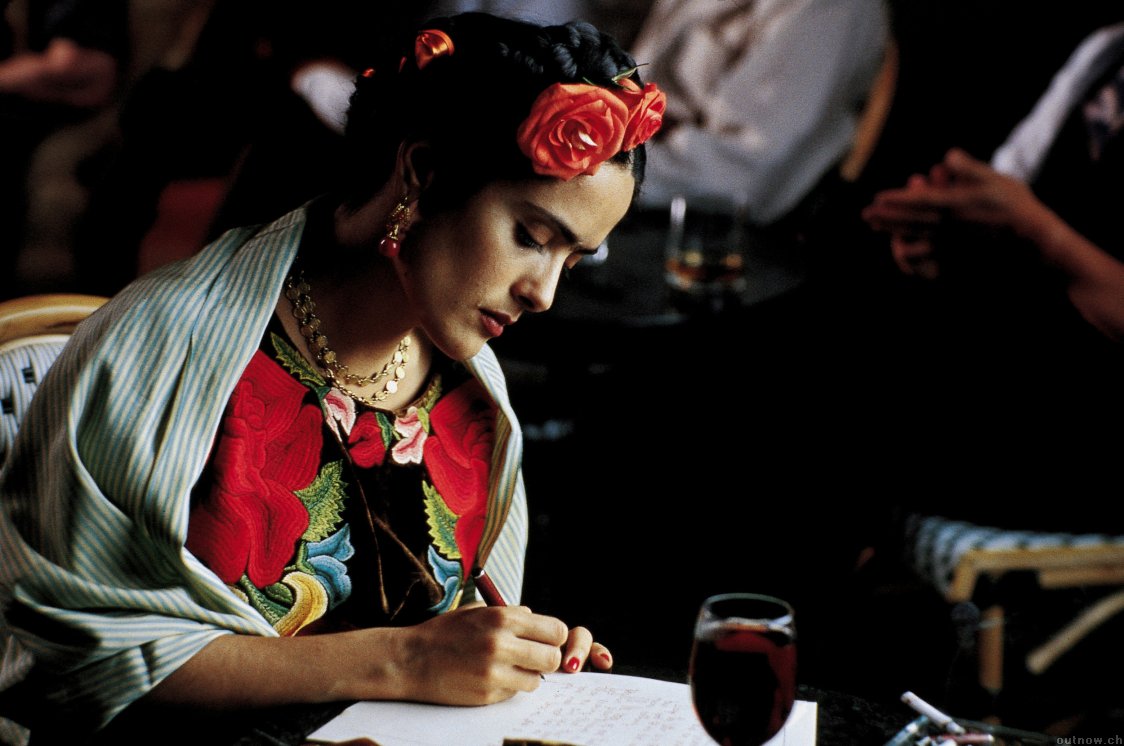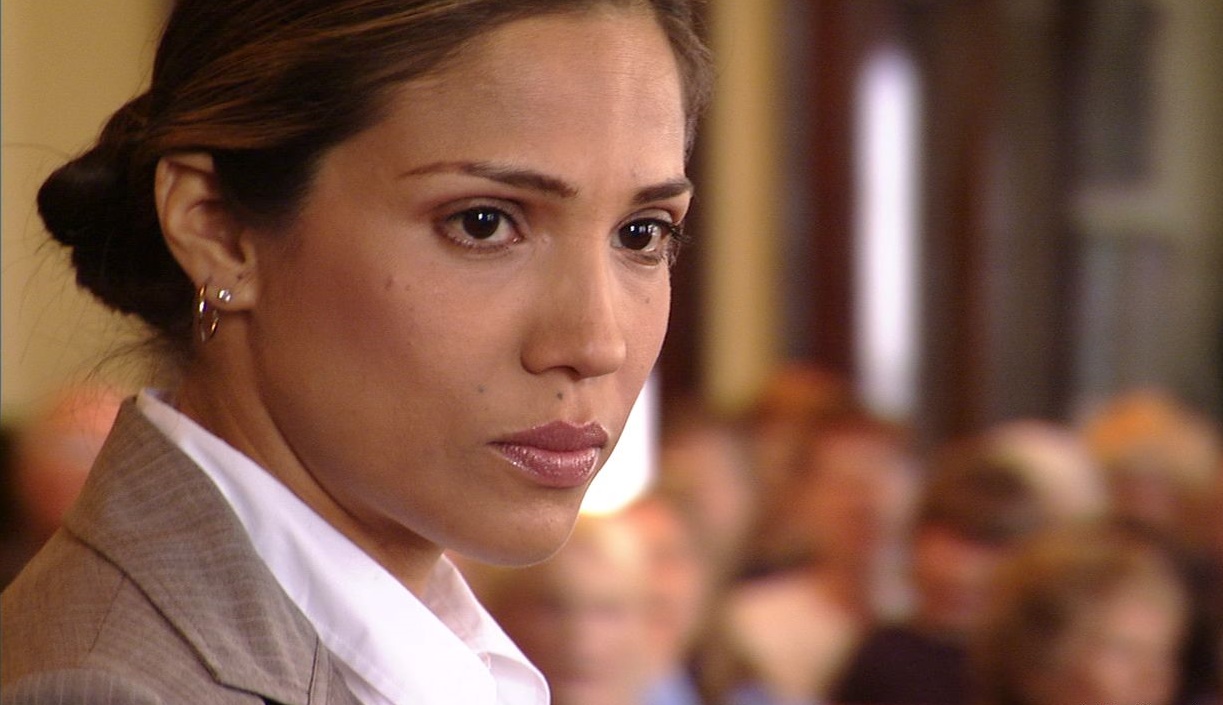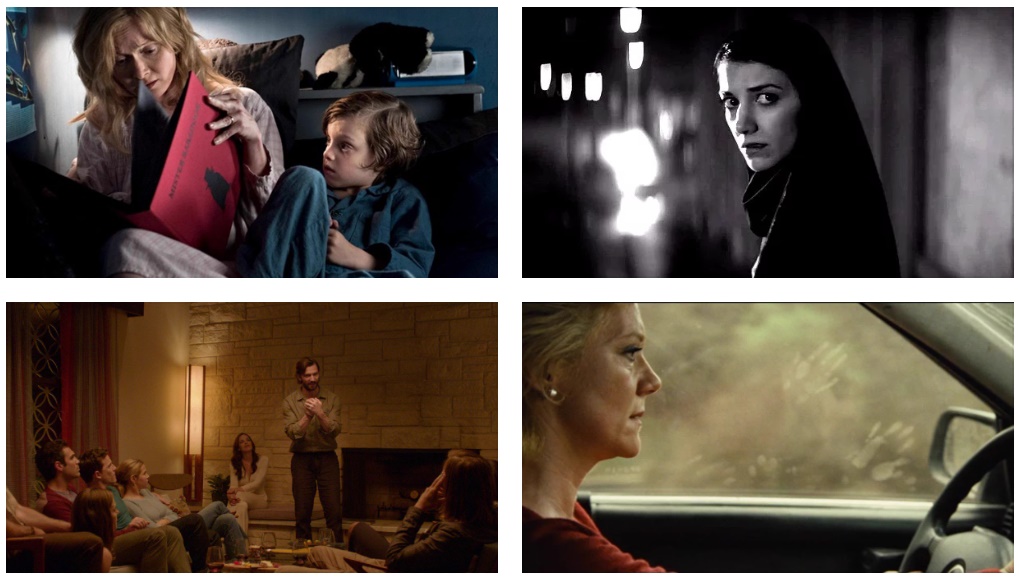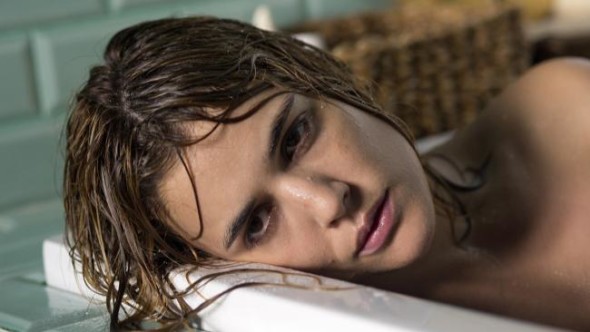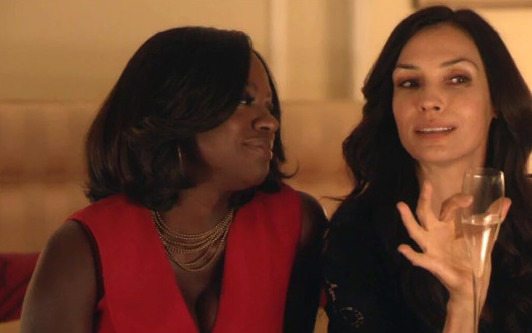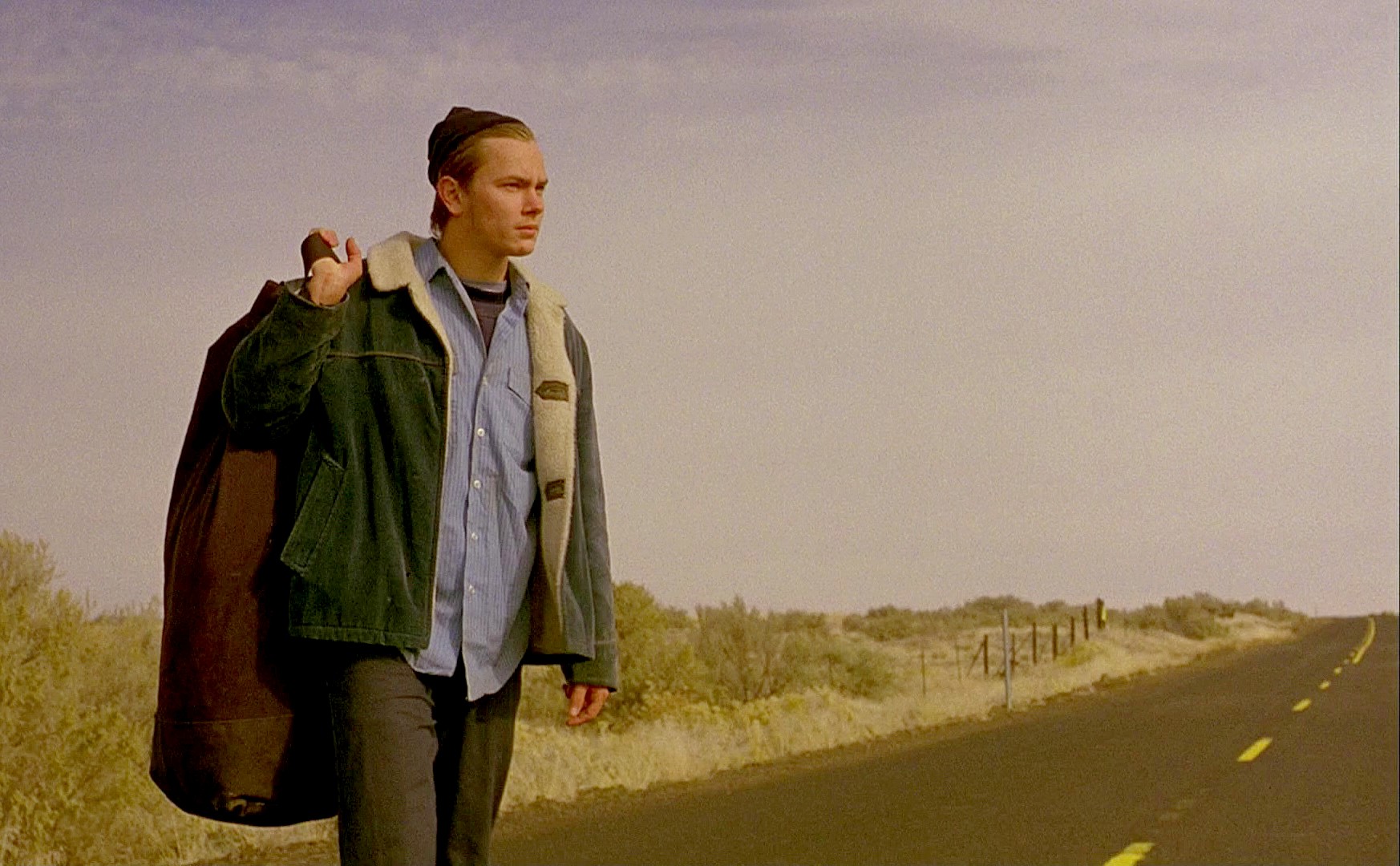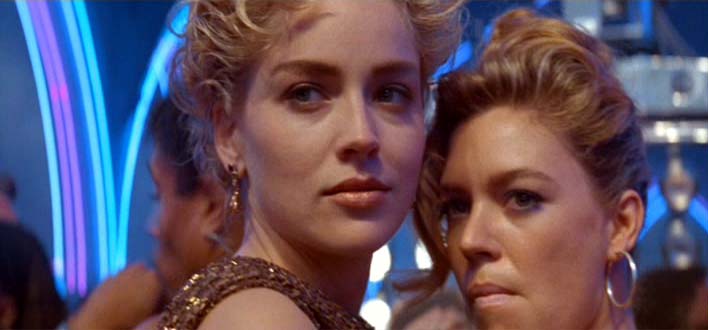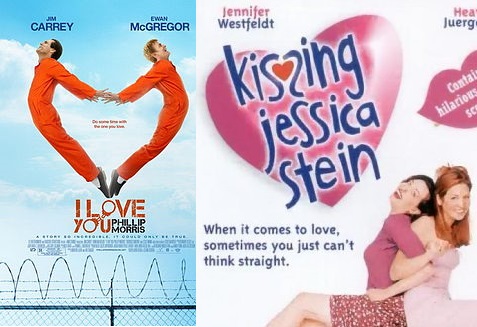This guest post by Ariel Smith originally appeared at Bitch Flicks and is reposted here as part of our theme week on Indigenous Women.
By forcing the subconscious fears of audiences to the surface, horror cinema evokes reactions psychologically and physically — that is its power. This power can serve and support uncensored Indigenous expression by allowing Indigenous filmmakers the opportunity to unleash dark, unsanitized allegorical representations of the abhorrent, repugnant, violent abomination that is colonization.
Mi’gmaq filmmaker Jeff Barnaby employs aesthetic strategies and themes from horror cinema in order to push back against stereotypical representations of Indigenous peoples and critique contemporary neo-colonial systems. Barnaby has been known to recall conventions from both body horror and dystopian science fiction in order to present dark, disturbing narratives in which Mi’gmaq characters navigate through gruesome representations of abjection and assimilation. In his first feature film, Rhymes for Young Ghouls (2013), we see Barnaby drawing from another sub-genre of horror cinema, that of the rape revenge film.
Revenge tropes in the hands of Jeff Barnaby are used to not only tell the story of the female lead’s experiences of violation, but also to articulate a visceral, rage-filled revenge fantasy on behalf of a violated peoples.
Rhymes for Young Ghouls is set against the backdrop of Canada’s Indian Residential School System.
For those who don’t know, from 1884 to 1948, it was compulsory for Indigenous children under 16 years of age living in what is now known as Canada to attend colonial government-funded, church-run day and boarding schools. Children were forcibly removed from their families by Indian agents, and families were threatened with fines or prison if they failed to send their children. Children as young as 5 could be kept away from their parents for months or years at a time, were prohibited from speaking their language, and were issued severe corporal punishment for any expression of non-Christian cultural, social or spiritual practice. The Indian Residential School System’s express and specific, methodical intention was to “Kill the Indian in the child“ and resulted in cultural genocide that Indigenous nations are only now beginning to heal from. Many children experienced heinous sexual, physical, and psychological abuse, as well as being subjected to publicly documented sterilization efforts and starvation experiments. The last residential school closed in Canada in 1996 and this colonial system has resulted in multiple, consecutive generations with both stolen childhoods and parenthoods. Even Indigenous children who did not attend residential school are affected by inter-generational trauma, as their parents and/or grandparents most likely attended.
Rhymes for Young Ghouls takes place on a Mi’gma reserve in the late 1970s. The lead protagonist, 15-year-old Alia, makes her living dealing pot. One of her most pressing expenses is paying off the corrupt and evil Indian agent, Popper, in order for herself, and other kids from her community to not be taken away to the residential school, where they will undoubtedly be physically and sexually abused. Alia winds up being double crossed and taken against her will to the school, but she soon breaks out and on Halloween night, together with a posse of other kids from the rez, enacts violent, bloody, revenge against the school’s abusive staff.
For me, the violence and graphic nature found in Barnaby’s work is fitting and appropriate due to the themes he engages. Barnaby’s films trigger visceral responses by exposing the audience to poetic and raw depictions of colonial violence against Indigenous bodies. As Indigenous people, we understand genocide and trauma; we understand horror, we live it. Barnaby’s films frame a space where non-Indigenous people must look at the screen and feel repulsed, afraid, and unsafe by facing the terrifying and grotesquely violent truth and reality that is colonial nation building.
The sub-genre of rape revenge is often categorized under an umbrella of exploitation cinema, famous for its use of shock value and extreme scenarios. However, Indigenous filmmakers’ contributions to the rape revenge canon do not require exaggeration. We do not need to think up imagined incidents of vicious macabre torture. The Marquis de Sade has nothing on Canada’s residential schools. The horror, the terror — it’s all around us, it is the foundation that the colonial states are built upon. We walk in it every day, and prove our resilience through continued survival.
Another example of rape revenge themes within Indigenous cinema can be found in Niitsítapi/Sami filmmaker Elle-Máijá Tailfeathers‘ short film, A Red Girl’s Reasoning.
Tailfeathers presents us with a narrative in which an Indigenous woman, who is raped, is failed by the justice system and becomes a vigilante, seeking and delivering violent revenge against her own and other women’s rapists.
As with Barnaby’s work, it is impossible for A Red Girl’s Reasoning to be read outside of a larger overarching social context, which in this case it is the ongoing epidemic of missing and murdered Indigenous woman and girls. There are over 800 cases of missing and murdered woman and girls in Canada which have been documented so far. Amnesty International Canada states:
“According to Statistics Canada the national homicide rate for Indigenous women is at least seven times higher than for non-Indigenous women… There are also a greatly disproportionate number of Indigenous women and girls among long-term missing persons cases. In Saskatchewan, Indigenous women make up only 6 per cent of the population of the province, but 60 per cent of its missing women are Indigenous.”
Media coverage and police support is often far less for missing or murdered Indigenous women than in the case of a white woman. Rape and sexual assault have been used as a tool of colonial conquest since contact and the epidemic of stolen sisters is a reflection of how Indigenous women continue to be devalued and dehumanized by white settler society.
The vengeance scenarios portrayed in both Rhymes for Young Ghouls and A Red Girl’s Reasoning resonate deeply with Indigenous audiences as they tap into our collective pain and anger. These films serve to disrupt the dominant visual culture, which excludes Indigenous perspectives and representation and has all but erased Indigenous peoples from the imagination of settler consciousness. Indigenous filmmakers provide visual allegory for what feminist and author bell hooks has called the “killing rage,” which is described as, “The fierce anger of black people stung by repeated instances of everyday racism… and the finding in that rage a healing source of love and strength, and a catalyst for productive change.”
Approaching and calling attention to the full depth of monstrosity that is colonial transgression is what makes Indigenous cinema, in general, such a powerful tool of resistance and resurgence. Indigenous cinema is bigger than the individual movies we make. Regardless of content or form, Native filmmakers have not yet been afforded the luxury to create work that is not automatically placed under a socio-political lens. As Indigenous peoples living in post-colonial/neo-colonial times, our presence — our very existence — is in itself a political statement, and our artistic expression is in itself a beautiful declaration of sovereignty, and self-determination.
See also at Bitch Flicks:
Courage and Consequences in Rhymes for Young Ghouls
Ariel Smith (Nêhiyaw/Jewish) is a filmmaker, video artist, writer and cultural worker currently based on unceded Algonquin territory, also known as Ottawa, Ontario. She has shown at festivals and galleries internationally including: Images (Toronto), Mix Experimental Film Festival (NYC), Urban Shaman (Winnipeg), MAI (Montreal), Gallery Sans Nom (Moncton), and Cold Creation Gallery (Barcelona, Spain). Her film Saviour Complex (2008) was nominated for Best Experimental at the 2008 Winnipeg Aboriginal Film Festival. Ariel’s video Swallow (2002) was the winner of the Cynthia Licker Sage Award at the 2004 imagineNative Film Festival, and Jury Third prize at the 2003 Media City Festival of Experimental Film and Video. Ariel’s writing and has been published by The Ottawa Art Gallery, The Ottawa International Animation Festival, imagineNative Festival of Indigenous Film and Media Art, and Kimiwan Magazine.
Ariel also works in Indigenous media arts advocacy and administration and is currently the director of National Indigenous Media Arts Coalition (NIMAC).
